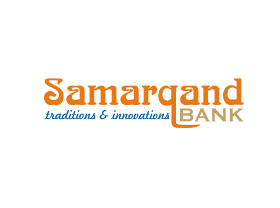
Ahbor-Reyting updates credit rating of Samarkand Bank
The rating uzB means average level of solvency of Samarkand Bank. Currently, bank fully and timely executes its financial liabilities, but “margin of safety” is limited and timely payments will depend from sustainable and favourable business environment and economic situation.
The rating also takes into account high concentration of debtors and risks, related to high growth of crediting, relatively high share of operations with affiliated sides, moderate capitalization, and low profitability figures due to potential expenses connected with business development. The rating also takes into account risks, related with the growth of assets, large positions in credit portfolio, as well as decreasing balance liquid position.
In 2010, the bank expanded its business scale of Samarkand Bank. The assets and equity capital of the bank grew by 65.27% year-on-year in 2010. Income-bearing assets of the bank grew twice. In the reporting period, the growth of the bank’s income were relatively low compared to growth of assets and capital, which resulted in decrease of net interest margin and spread. Taking into account this, Ahbor-Reyting supposes that the profitability level of Samarkand Bank will be in relatively low level.
In line with the audited report of Samarkand Bank, the loan portfolio of Samarkand Bank made up 17.7 billion soums in 2010 compared to 8.9 billion soums in 2009. Some 57.48% of loans were issued to companies by general control, 23.65% of loans – to shareholders of the bank and other part of loans fell to share of other clients.
Average term of loan portfolio of the bank is mainly long-term, which is typical for the banking sector of Uzbekistan. In 2010, about 74.19% (76.61% in the second quarter of 2011) of loans are issued for over a year. All loans were issued in national currency, which means low level of sensitivity of loans to risks, related with currency fluctuations.
In 2010, the main source of funding is clients’ accounts at the banks. In 2010, 84.68% of attracted resources of Samarkand Bank fell to resources of the clients (88.86% in 2009). At the same time, clientele accounts of the bank are short-term.
In the reviewed period, the liabilities with the maturity term of up to a year made up 93.29% of the bank’s liabilities. At the same time, term resource base of the bank in 2010 grew by 80.12% and made up 60.71% of liability of the bank.
Equity capital of Samarkand bank in 2010 reached 21.9 billion soums, or grew by 44.84% year-on-year. Besides, undistributed income grew by 55.19% to 2.2 billion soums in 2010.
Simultaneously, own capital of the bank grew by 51.44% to 15.6 billion soums in 2010. At the same time, the coefficient of capital adequacy of Samarkand Bank was in relatively high level. At the end of 2010, the figure of capital adequacy and first level capital adequacy of the bank made up 43.7% and 80.8% (62.2% and 83.6% in 2009) respectively.